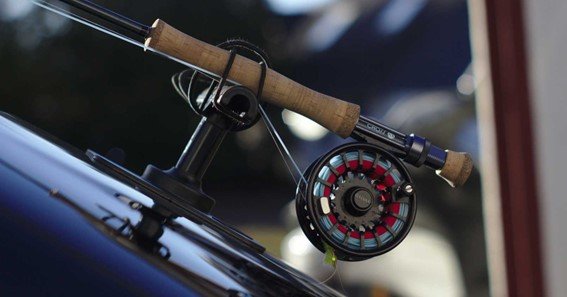Choosing the right backing weight is crucial for a successful fly fishing setup. The backing serves as a safety net, giving you additional line length when battling large or fast fish. Understanding the best weight for backing fly fishing can make a significant difference in your angling experience.
What is the Purpose of Backing in Fly Fishing?
Backing is a strong line, typically made from materials like Dacron or Gel Spun, placed between the fly line and the reel. Its primary function is to provide extra length, ensuring you don’t run out of line when a fish makes a long run. It also helps fill the spool, ensuring smoother and more efficient casting.
Choosing the Right Backing Weight
- Fish Species
- Trout and Small Freshwater Species: For smaller fish like trout, a 20-pound Dacron backing is generally sufficient. It provides enough strength while maintaining a lightweight setup.
- Bass, Pike, and Larger Freshwater Fish: A 30-pound backing is recommended, offering more durability for bigger fish.
- Saltwater Species: For larger, faster fish like bonefish or tarpon, a 30 to 50-pound Gel Spun backing is preferred due to its thinner diameter and higher strength.
- Fishing Environment
- Freshwater: Typically requires lighter backing, with 20 to 30-pound strength being adequate.
- Saltwater: Demands stronger backing due to larger fish and harsh conditions. A 30-pound or higher backing weight is ideal, with some anglers opting for up to 50-pound strength for big game species.
- Fly Line Weight Compatibility
- The weight of your fly line should match the backing weight for optimal performance. For example:
- A 5-weight fly line pairs well with 20-pound backing.
- Heavier lines, such as 8-weight, may require 30-pound or more for better durability.
- The weight of your fly line should match the backing weight for optimal performance. For example:
- Amount of Backing Needed
- Trout Fishing: 50 to 100 yards of 20-pound backing is usually enough.
- Saltwater Fishing: You may need 200 to 300 yards or more, especially for larger fish like salmon or tarpon.
Types of Backing Materials
- Dacron: A common choice due to its affordability and slight stretch, which is useful for absorbing sudden movements. It’s typically used for freshwater fishing.
- Gel Spun Polyethylene (GSP): Stronger and thinner than Dacron, allowing more line on the reel. It’s ideal for saltwater fishing due to its strength and abrasion resistance, though it can be more expensive.
Best Practices for Setting Up Backing
- Ensure the backing is spooled tightly with the right tension to avoid tangling.
- Leave about 1/8 inch of space on the reel to accommodate the fly line without crowding.
- Use appropriate knots for attaching backing to the reel and fly line to maintain strength and prevent slipping.
FAQ
- What is the best weight for backing trout fishing?
- A 20-pound Dacron backing is generally sufficient for trout and other small freshwater fish.
- Should I choose Dacron or Gel Spun for saltwater fishing?
- Gel Spun is preferred for saltwater due to its higher strength and thinner diameter, which allows for more line capacity.
- How much backing do I need for bass or pike?
- For larger freshwater fish like bass or pike, a 30-pound backing is ideal for strength and durability.
- What factors influence the choice of backing weight?
- Consider the species targeted, fishing environment (freshwater or saltwater), and fly line weight.
- How much backing should I spool onto my reel?
- For small species, 50 to 100 yards is adequate, while larger species may require 200 to 300 yards or more.
Conclusion
Choosing the right backing weight for fly fishing is essential to ensure you are prepared for any situation, whether you’re targeting small trout in freshwater or tackling larger saltwater species. Matching the backing to your fly line and considering the environment and target species will help you create the perfect setup.










